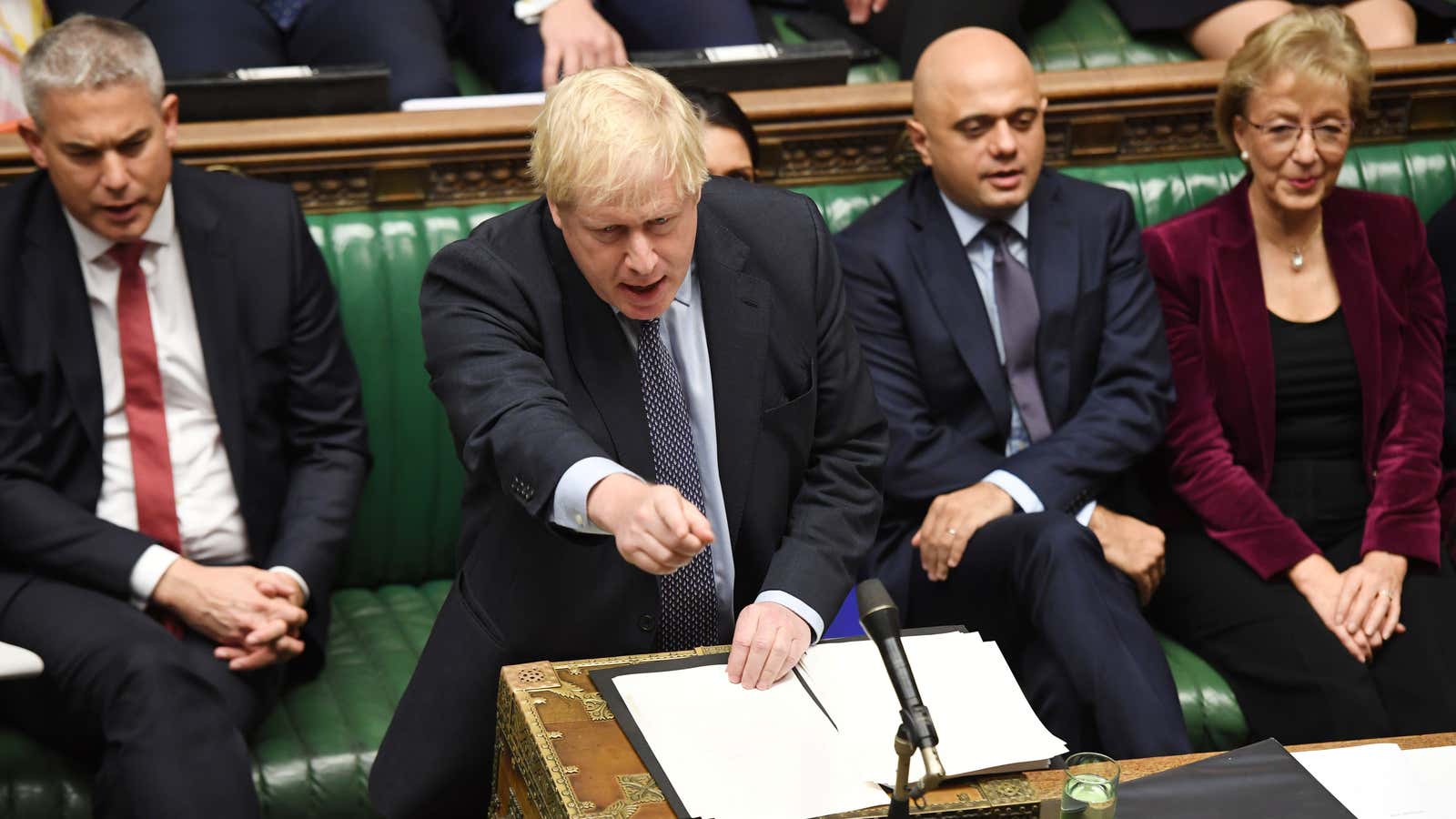It’s hard to make predictions, especially about the future.
The British government appears to be taking that old canard about forecasting to heart when it comes to Brexit, as it rushes to get legislation on the UK’s exit from the EU passed by the end of the month. Late last night, it published the 115-page withdrawal agreement bill (pdf), which is expected to be put to a parliamentary vote later today. If all goes to plan, it will then follow an accelerated timetable to pass the bill into law before the current Brexit deadline of October 31.
A clause in the Brexit bill specifically exempts it from the requirement that it, like other international treaties, sit before parliament for at least 21 days before being ratified. When the government was asked last week by a parliamentary committee for an impact assessment of its revamped Brexit agreement, chancellor of the exchequer Sajid Javid said in a letter (pdf) that the deal is “self-evidently in our economic interest.” An impact analysis is a key input to any debate about consequential legislation, but Javid added that the impact of leaving the EU on terms negotiated by prime minister Boris Johnson last week is “something that cannot be measured solely through spreadsheets or impact assessments, important though they are.”
This is not to say that assessing the effects of the Brexit bill has been avoided entirely. A 69-page impact assessment (pdf) was published alongside the bill last night. It concludes that the legislation will cost the country £167 million ($216 million) over 10 years. This is “not an assessment of the decision to leave the European Union,” it notes.
Quite.
In November, a government analysis (pdf) estimated that the UK would be made poorer by the sort of Brexit scenario currently under discussion. Think tanks have scrambled to assess the specific costs (pdf, p. 7) of Johnson’s Brexit agreement and come up with forecasts that the British economy would be tens of billions of pounds smaller than if the UK stayed in the EU.
The government’s assessment of its Brexit bill avoids putting numbers to just about anything, mainly sticking to the costs of staffing a few new departments to deal with post-Brexit bureaucracy. Anything else is either out of the scope of the assessment or too difficult to quantify due to “data limitations.” In his letter, Javid notes that detailed analyses of Brexit’s impact in the past “did not seek to predict how the UK economy will actually perform in the future, not least because the UK’s exit from the EU will be just one of a number of factors impacting economic growth.” In essence, because the future is unknowable, why bother?
In its assessment of the assessment (pdf), as it were, the Regulatory Policy Committee (RPC), an official body charged with gauging the impact of regulation on the economy, notes with great understatement that the government’s analysis of the Brexit bill’s impact “could benefit from improved evidence, to the level that the RPC would normally expect to see.” The government’s assessment describes various costs and benefits as “non-monetised” 105 times.
In particular, new measures that impose customs checks on trade between Northern Ireland and Great Britain were not assessed quantitatively by the government, citing a lack of data on intra-UK trade. (Northern Ireland’s department of economy has published extensive analyses on this.) A report by the UK’s tax authority last year noted that introducing customs checks for UK-EU trade would cost £7.5 billion per year in extra administrative costs. This burden—between £15 and £56 per declaration—would also be faced by some traders shipping goods between Northern Ireland and Great Britain under the current Brexit agreement.
So what are we—much less lawmakers preparing to vote on the bill with less than 24 hours notice—to make of all this? With so little to go on, perhaps the most helpful appraisal of the latest Brexit deal is a meta-analysis of sorts: in the government’s impact assessment, “cost” is mentioned three times more than “benefit.” Here’s a chart, providing some data to a debate that largely lacks it:
